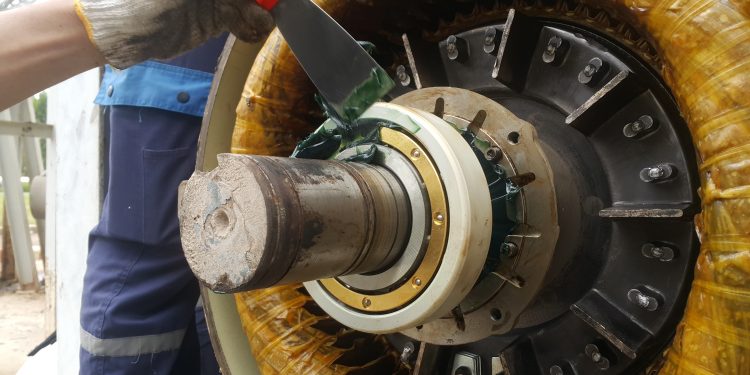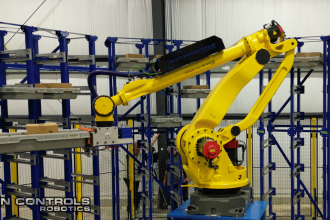Greasing the Motor

At the center of all warehousing operations is the equipment that helps your team get products into and out of the facility. From conveyors to robots, sortation systems and everything in between, this equipment is essential. Any downtime and you’re facing a loss of thousands of dollars. It’s essential, therefore, that you keep the electric motors inside of this equipment humming and operational.
One of the best ways to accomplish that is to understand the role of grease in these motors and manage it properly. Electric motors don’t have many moving parts to maintain, but the few that you can influence are critical for its health. To keep them running smoothly, they need the proper type and amount of grease. Grease in electric motors serves many functions, from controlling temperatures, aiding in alignment and most importantly preventing excess from friction and wear from metal on metal contact.
The impact of both over-greasing and under-greasing can lead to failures of all types, so finding the right cadence for applying grease, and understanding in what quantities, is essential.
For the most part, the traditional model of maintaining electric motors has involved your maintenance team pumping a prescribed amount of grease onto them at specific intervals. A typical scenario might involve a conveyor motor, for instance: every two weeks, your team will grab the appropriate type of grease and give the motor five pumps of it. This occurs whether or not the grease is necessary, and the team will keep on with this routine in perpetuity. While that might seem logical and unharmful, it can often be neither.
If this approach leads to over-greasing your motor, you might be facing several issues. For instance, too much grease can lead to excess heat and burn out because the motor must work extra hard against all that grease, defeating the purpose. Too much grease can also damage the bearings, causing them to get out of alignment. When bearings aren’t aligned, they create an imbalanced shaft, leading to breakage. Time based interval greasing can also lead to grease getting pushed into areas that were never intended to harbor grease. The copper windings of an electric motor should never have grease inside them, however all too often when too much grease is pumped into the bearings the grease finds its way beyond the seals and into the windings and eventually its internal destruction.
Your OEM or equipment manual should have all the correct information you need for greasing your electric motors. The goal should be applying grease as needed, not based on a certain time. You should calculate how much grease is needed for each motor. You can supplement this with online monitoring tools that measure things like temperature to help you determine when grease is needed. Also make sure your grease guns are properly calibrated. One grease gun may be different than another, so the number of pumps from one gun may not match the number from another, unless they’re calibrated.
Other factors to consider when determining how much grease to apply include the environment and conditions in which you’re operating. A machine in a mostly clean indoors environment will have different grease requirements than a machine operating outside with a good deal of dirt and dust.
While small motors can come with a relatively affordable price tag——the big expense in a shutdown isn’t the motor itself, but the lost productivity. For this reason, learn your motor’s greasing needs and stick to the plan—you’ll save thousands of dollars in the long run.
For more information about the Solutions Community: mhi.org/solutions-community
For further articles from the Solutions Community:
How to Use Software to Attract and Retain Talent
Digitization of Intralogistics: Software
Forward Pick Area—Design and Operations
Maintenance Check: From Reactive to Predictive
Digitization of Intralogistics—Replenishment



